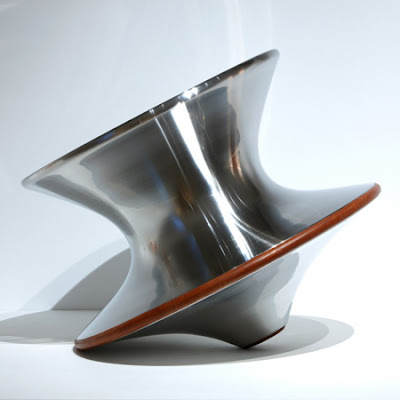In this second semester we have this first project which task is to redesign an everyday hand tool (no electricity is allowed) into a more pleasurable one that enriches and enhances the experiences of the user while engaging in its use.
I found it harder than i thought it would be.. but actually it's kind of challenging since this is the first project we have that we actually designing a real product. This is my first 3 rough design concepts..
 |
| Measuring cone |
 |
| Chopping board |
 |
| Pasta strainer |
Critics :
- The measuring cone isn't gonna work because it will arouse leaking problem and it's complicated to use since there are lots of steps we have to do to use this product.
- Chopping boards with chute are already out there in the market.
- The pasta stainer have the same problem as the cone as there are so many steps to use this product, making this strainer impractical. The bowl isn't necessarily needed. However there is a good opportunity for improving the pleasurability of preparing the pasta, with less equipment to use.
The critics remind me that the main aim of this project is to redesign a pleasurable hand tools.. And my problem is that those design is impractical and impractical product is not fun and enjoyable, instead it makes the user feel 'obligated' and confuse what he should do first, next, etc. to use the product. After all, even though i feel sad, i kno those critics is not to make us feel down, instead it helps us to create even better design (hoo i sounds like mommies lol)
WARNING. Read if you want to kno the story behind my ideas. if not, you better scroll down coz it's gonna be freakin long story hahaha
The thing is, i thought we have to make 3 concepts with new function, new products that never existed! hahaha thats why I spent so much time thinking.. what doesn't exist out there?! Every time i had an idea, i googled and turns out it's out theree. Finally i got the idea of measuring cone when i'm trying to found other product that can replaced measuring spoon (usually have 3 sets of spoon consists of 6 measurements). I thought measuring spoons are boring and it will attract people's interest if there is a new model of measuring spoons.
The design process of the chopping board has different story. I got the idea from my own experience hehe. Every time im using my chopping boards, i find it difficult to collect the chopped objects. I have to direct the food to my plates using knife and it usually ends up messy, that's why i got an idea that it would be really nice if at the end of the chopping board there is a chute to help us pour the foods easily. While the strainer at the other end is based on my observation that people sometimes wash their veggie or fruits first before they chop them..and i thought if i attach a strainer in my chopping board, people won't have to use two different tools and hence they will reduce the time washing dishes hehe.
The strainer has long story as well. Shortly (I began to feel tired of typing hahaha), i thought it would be pleasurable if i could eat the pasta straight from the bowl. So after it is strained i just have to flip the handle, add the sauce, give it a shake (it would be easy because the shape is like a ball haha), release the bowl..and tadaa your pasta is served. But after i saw his facial expression when i was explaining the concept and heard my tutor's comments.. i realised the concept is too complex and maybe i'm the only one who can enjoy using the tools hahahaha.
Bottom line : No matter how hard that day and how sad it is that 2 of my 3 designs were rejected, i learnt so much about designing a product AND...about me! After thinking a while and I look back to my past design works, i realised i tend to make something that is complex and complicated (you could take a look at my past works in this blog and you'll find it true :D). From this moment onwards i'll train myself to be more minimalist!
Omg that's a long writing. Sorry, such a waste of your time hahaha
READ THIS. Dont hesitate to drop any comments if you want to. It's okay even when it's a bad feedback, i won't kill you :D
ciao!









